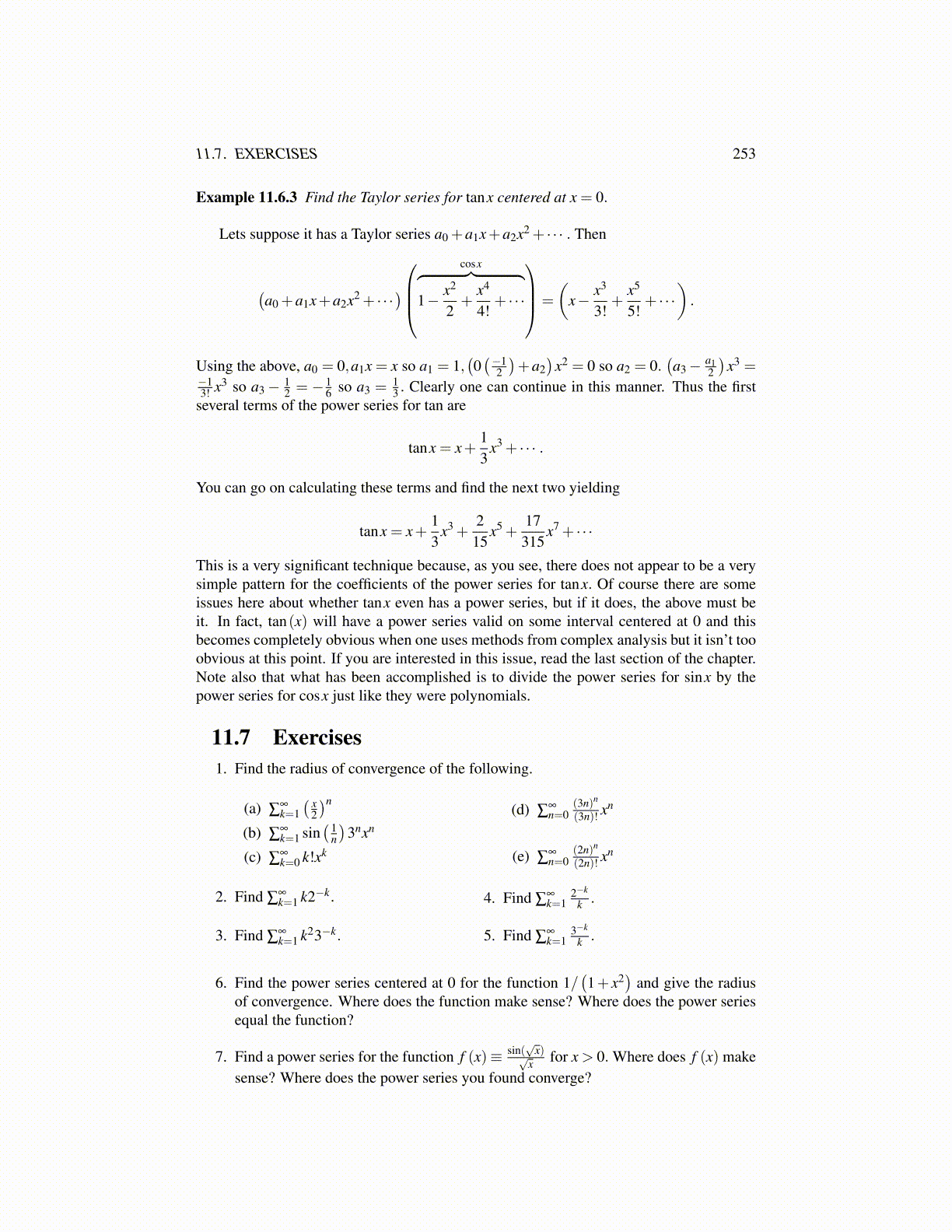
11.7. EXERCISES 253
Example 11.6.3 Find the Taylor series for tanx centered at x = 0.
Lets suppose it has a Taylor series a0 +a1x+a2x2 + · · · . Then
(a0 +a1x+a2x2 + · · ·
)cosx︷ ︸︸ ︷
1− x2
2+
x4
4!+ · · ·
=
(x− x3
3!+
x5
5!+ · · ·
).
Using the above, a0 = 0,a1x = x so a1 = 1,(0(−1
2
)+a2
)x2 = 0 so a2 = 0.
(a3 − a1
2
)x3 =
−13! x3 so a3 − 1
2 = − 16 so a3 = 1
3 . Clearly one can continue in this manner. Thus the firstseveral terms of the power series for tan are
tanx = x+13
x3 + · · · .
You can go on calculating these terms and find the next two yielding
tanx = x+13
x3 +2
15x5 +
17315
x7 + · · ·
This is a very significant technique because, as you see, there does not appear to be a verysimple pattern for the coefficients of the power series for tanx. Of course there are someissues here about whether tanx even has a power series, but if it does, the above must beit. In fact, tan(x) will have a power series valid on some interval centered at 0 and thisbecomes completely obvious when one uses methods from complex analysis but it isn’t tooobvious at this point. If you are interested in this issue, read the last section of the chapter.Note also that what has been accomplished is to divide the power series for sinx by thepower series for cosx just like they were polynomials.
11.7 Exercises1. Find the radius of convergence of the following.
(a) ∑∞k=1( x
2
)n
(b) ∑∞k=1 sin
( 1n
)3nxn
(c) ∑∞k=0 k!xk
(d) ∑∞n=0
(3n)n
(3n)! xn
(e) ∑∞n=0
(2n)n
(2n)! xn
2. Find ∑∞k=1 k2−k.
3. Find ∑∞k=1 k23−k.
4. Find ∑∞k=1
2−k
k .
5. Find ∑∞k=1
3−k
k .
6. Find the power series centered at 0 for the function 1/(1+ x2
)and give the radius
of convergence. Where does the function make sense? Where does the power seriesequal the function?
7. Find a power series for the function f (x)≡ sin(√
x)√x for x > 0. Where does f (x) make
sense? Where does the power series you found converge?